A Trail Divided
Dividend Pond Trails, Rocky Hill
December 2023
The official name of this place is Dividend Pond State Archaeological Preserve. There’s a pretty nice waterfall, several decent trails, and a mildly fascinating geologic wonder. Man, Rocky Hill with its geologic wonders… here, Dinosaur State Park, Quarry Park. I guess it makes sense the town is called Rocky Hill then, even though there really aren’t any notable rocky hills.
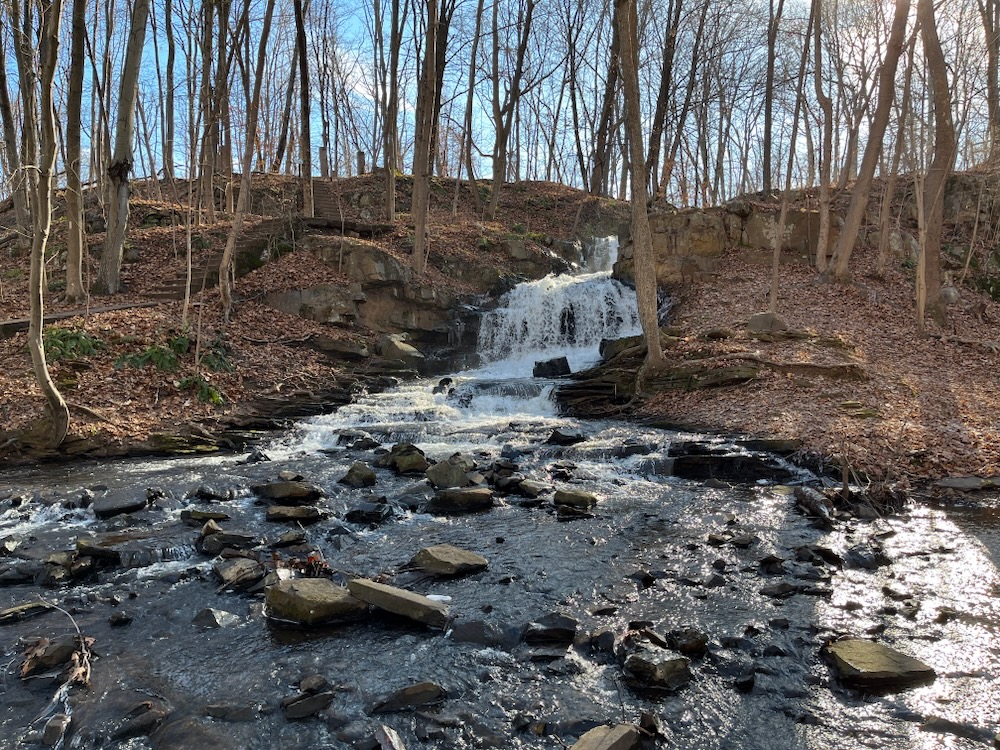
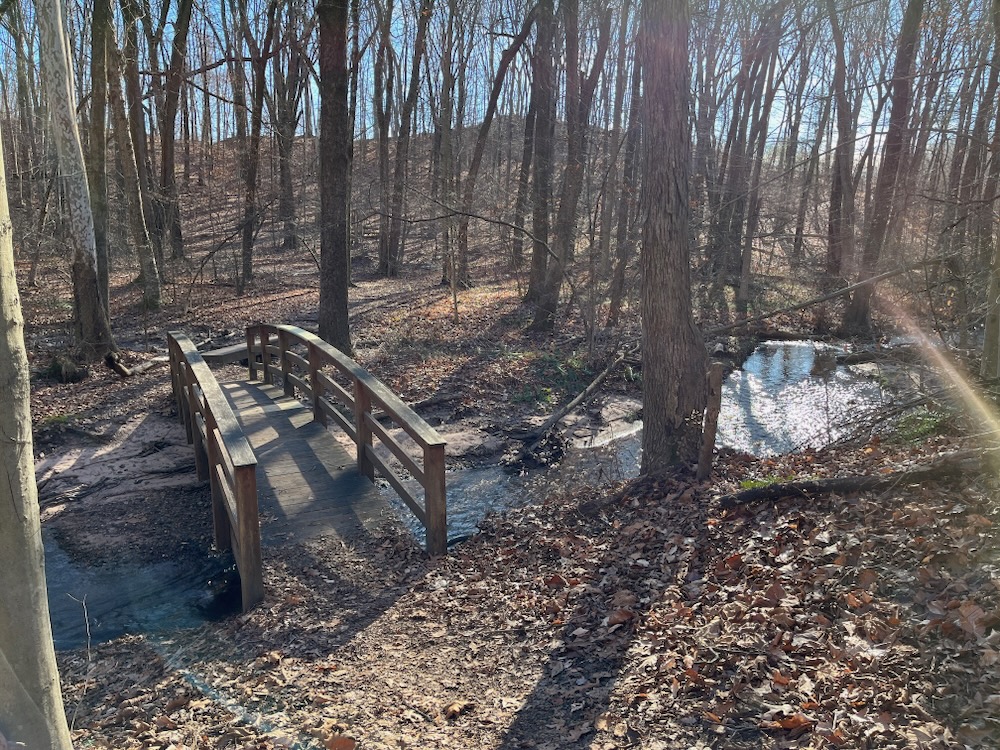
Dividend Pond was once the site of the area’s first serious industry. For centuries this place consisted of a bunch of various gristmills, factories, and sawmills, but the very first non slip horseshoe was invented here and the patent eventually sold for $10,000 around 1866.
As I set out to hike… hold on. Again with this? The same guy – a surely wonderful guy who I know is active in local environmental causes and the historical society, y’know, my kind of guy – made the map for Quarry Park and Dividend Pond. And he did it again!
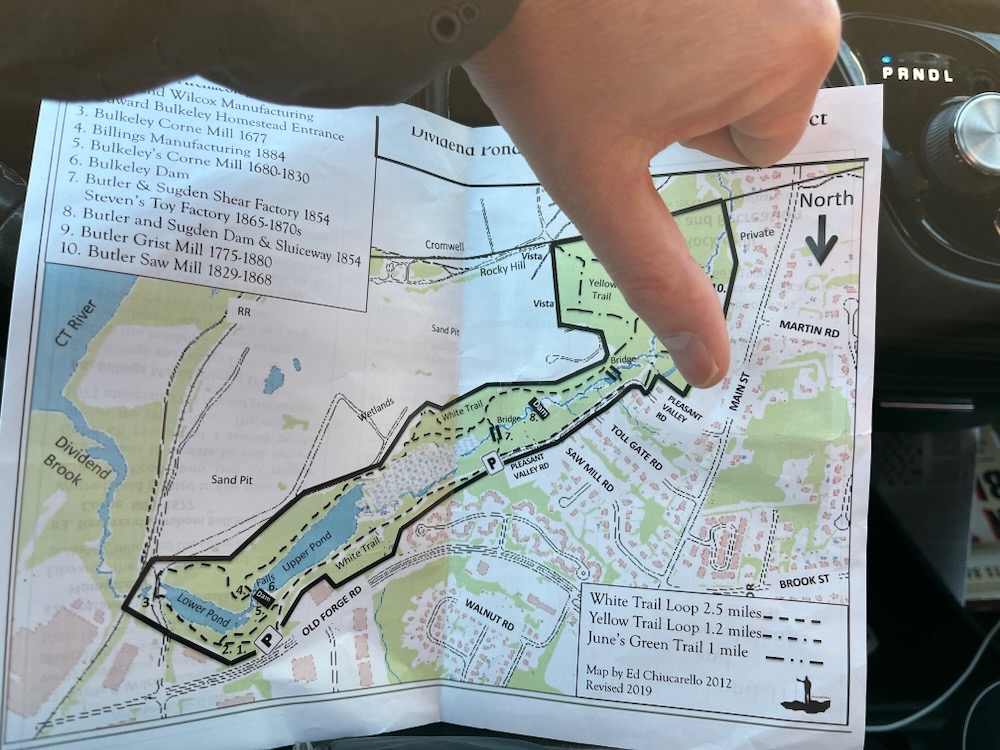
Yup, he did it again.
Orient.
Your.
Maps.
North.
There is zero reason to do what he’s done here and at Quarry Park! I’m pretty easy going, and like to think I let a lot roll off my back. Heck, I’m the father of a 13 year old and a difficult special needs 18 year old. I have to.
But this boils my blood. Okay, back to Dividend Pond…
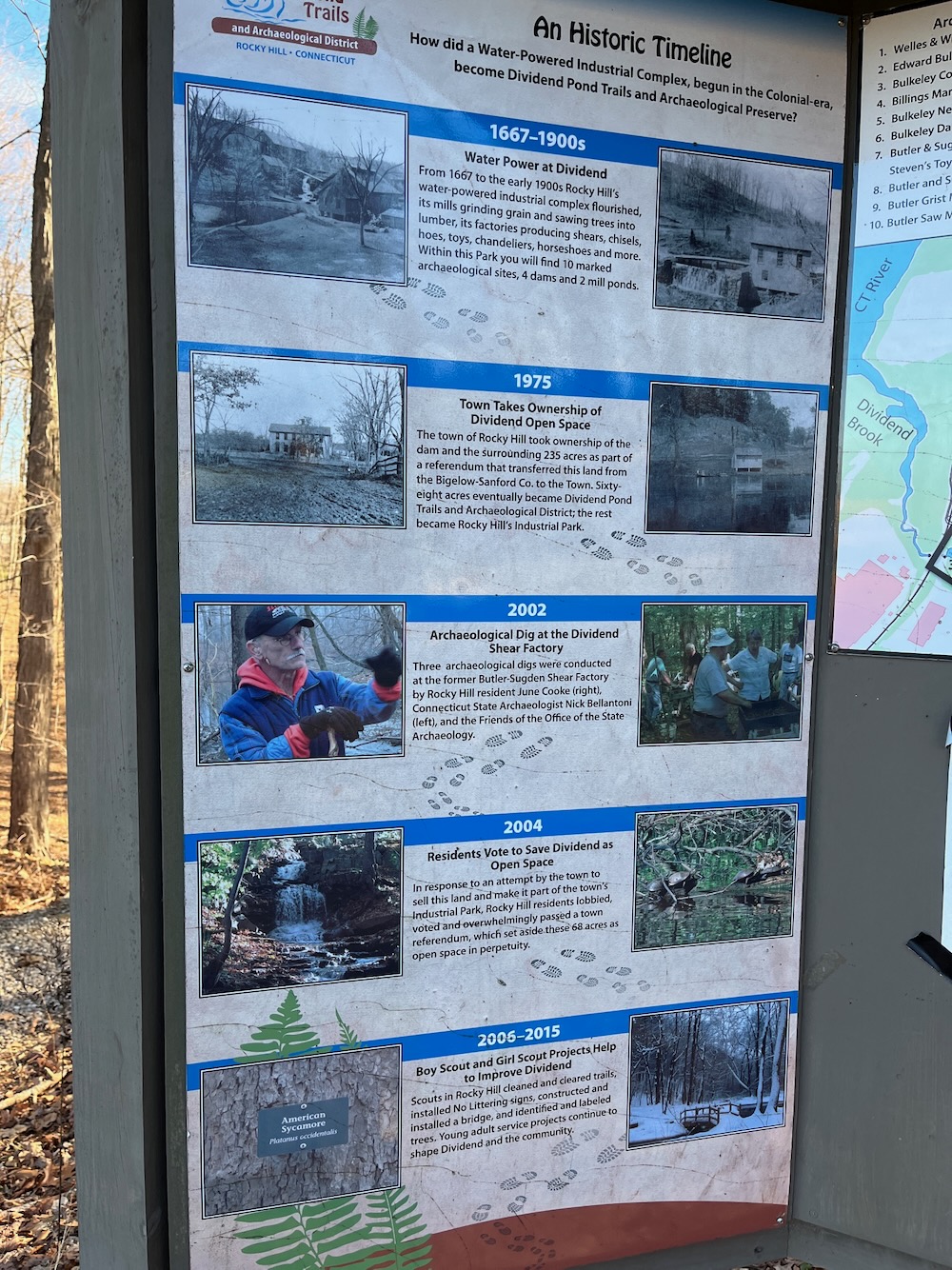
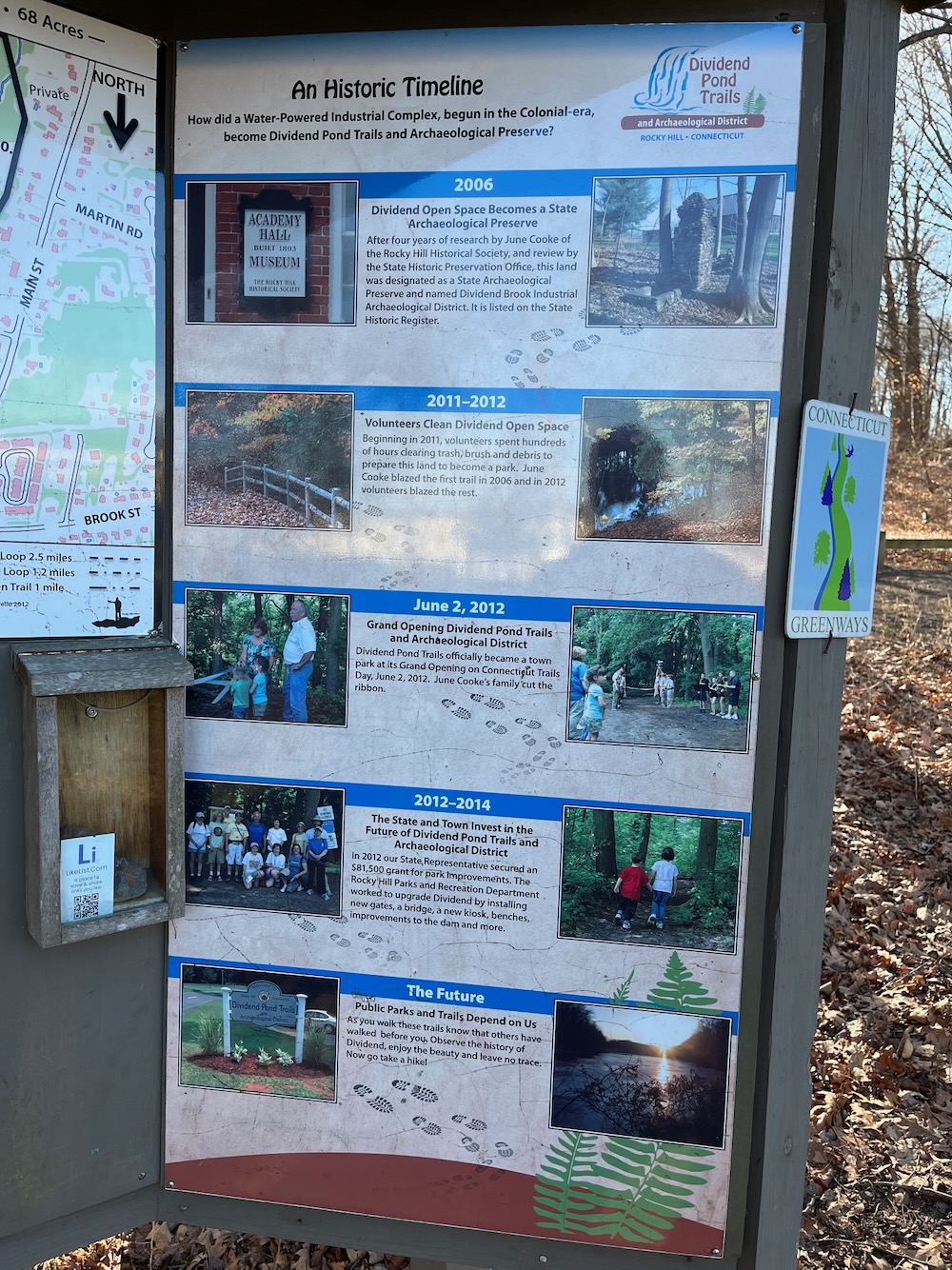
From the main parking area on Old Forge Road – the northernmost point of the park which is at the bottom of the map – visitors have their choice of what to do.
If you’re coming here just to check out the waterfall, have at it. A set of stairs takes you down to view them from below, and there’s an easy path to the top.
The falls here are very nice.
Spoiler alert: the entire property is very nice.

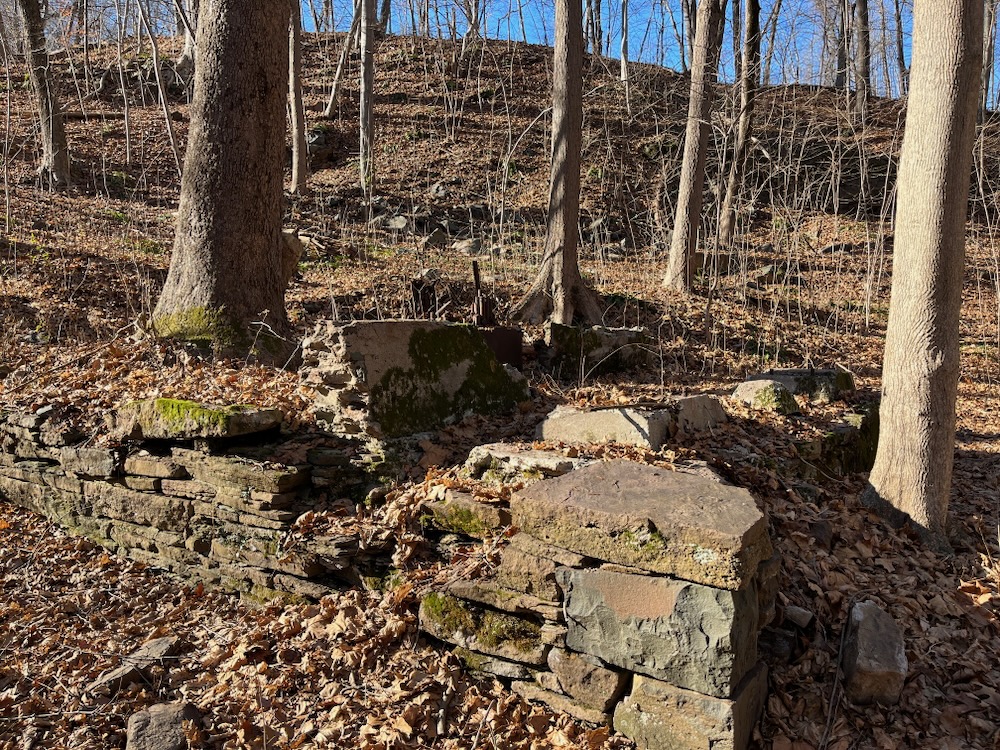
Most of the industrial history artifacts and signs are below the falls around “Lower Pond,” so you can do a loop around all of that if that’s your thing. As for me, I was here to take in the whole place, so I first set out around the Upper Pond and into the woods and glacial sediment dam hills beyond.
Yes, that’s right. But we’ll get to that in a bit.
I took the counterclockwise route around the pond which begins on a wide, flat white-blazed path.
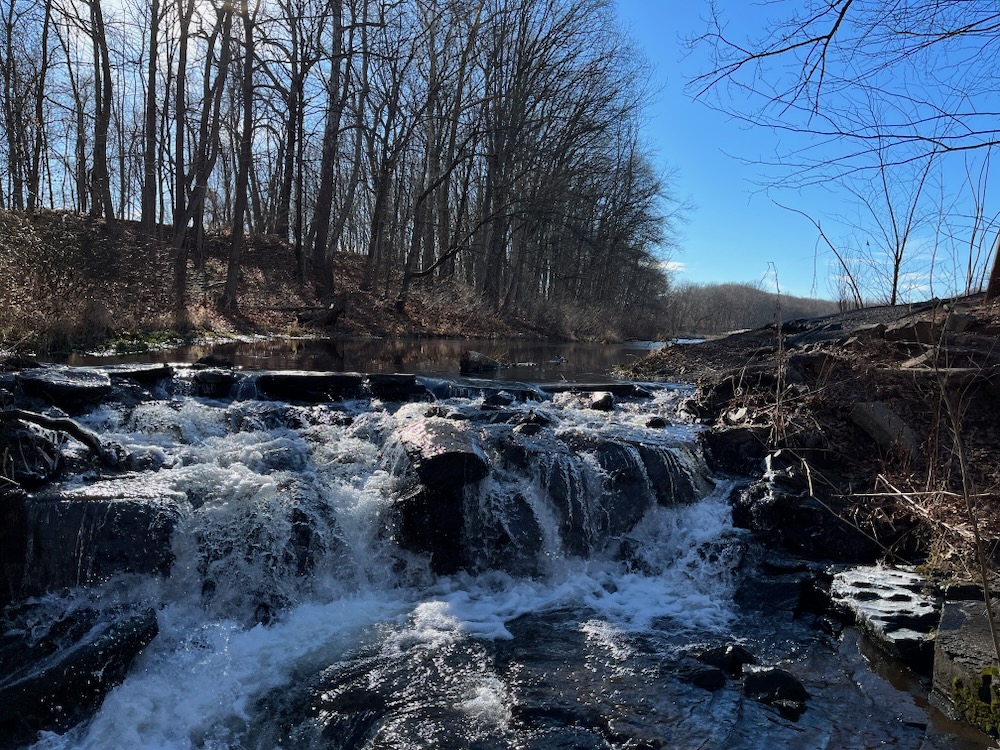
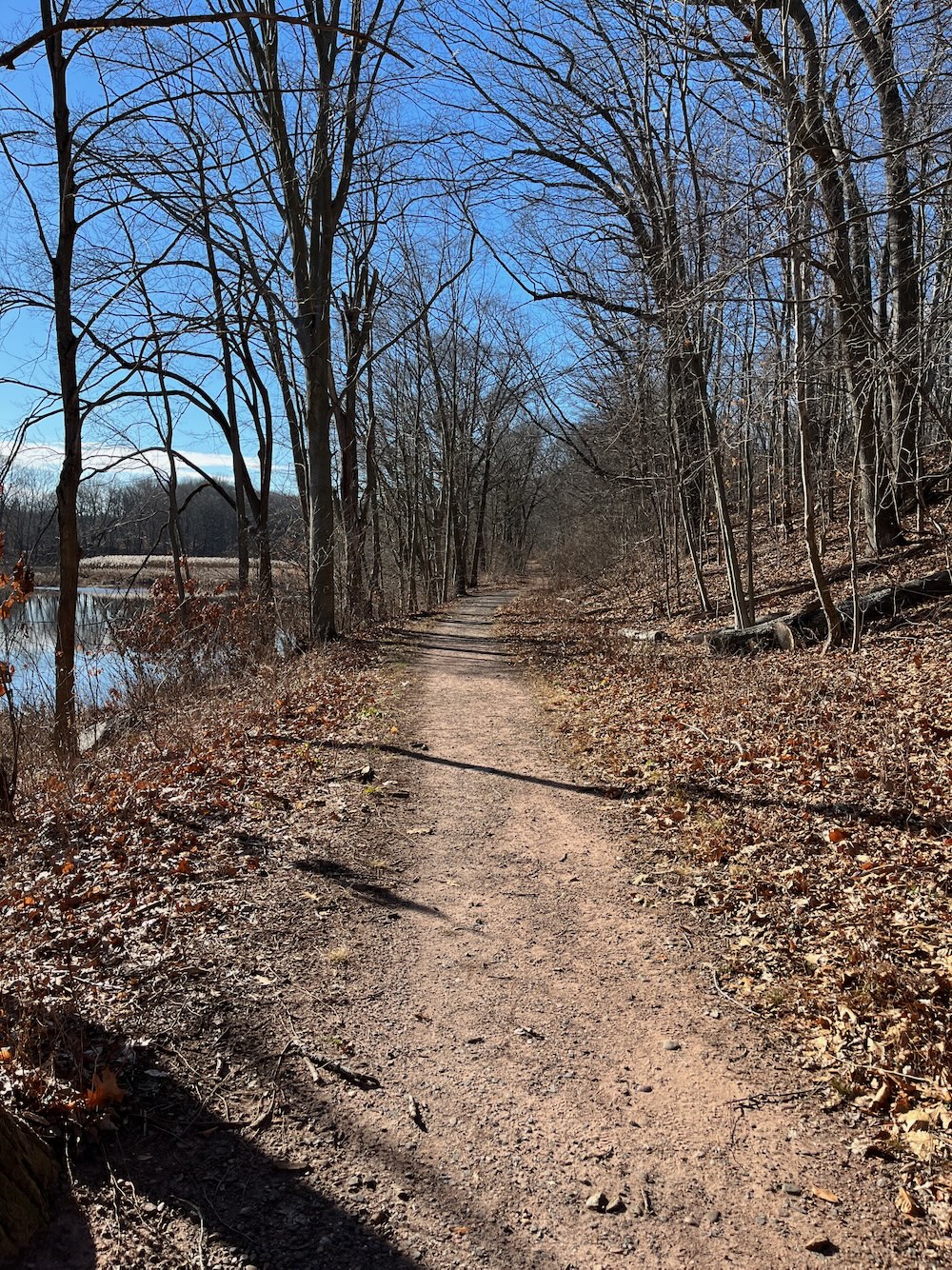
Once beyond the pond, the trail becomes more of a woodland trail alongside a large marshy area before dumping me out onto Pleasant Valley Road. The trail officially continues along the road for a quarter mile before the road takes a 90-degree curve, and the trail re-enters the woods.
I assume most people continue on the white trail, across a handsome bridge and back down the other side of the marsh/pond. More intrepid hikers will opt for the green-blazed June’s Trail.
June’s Trail is one of those trails that very few hike. It doesn’t connect to anything and it goes nowhere. So while that sounds like it’s easy to make fun of, it’s not.
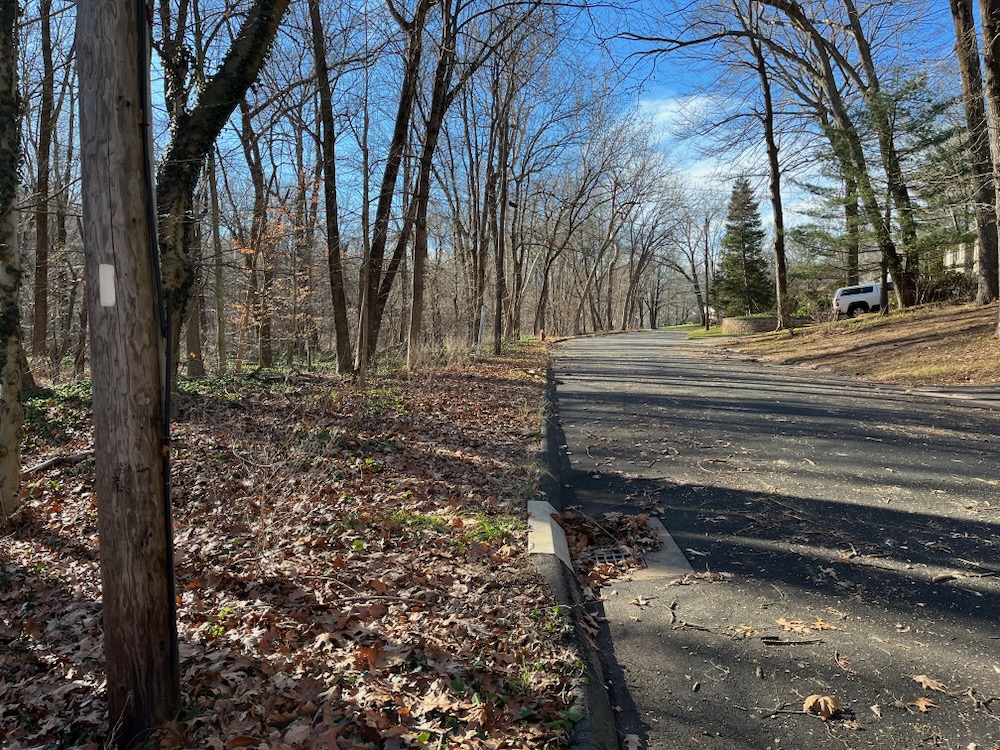
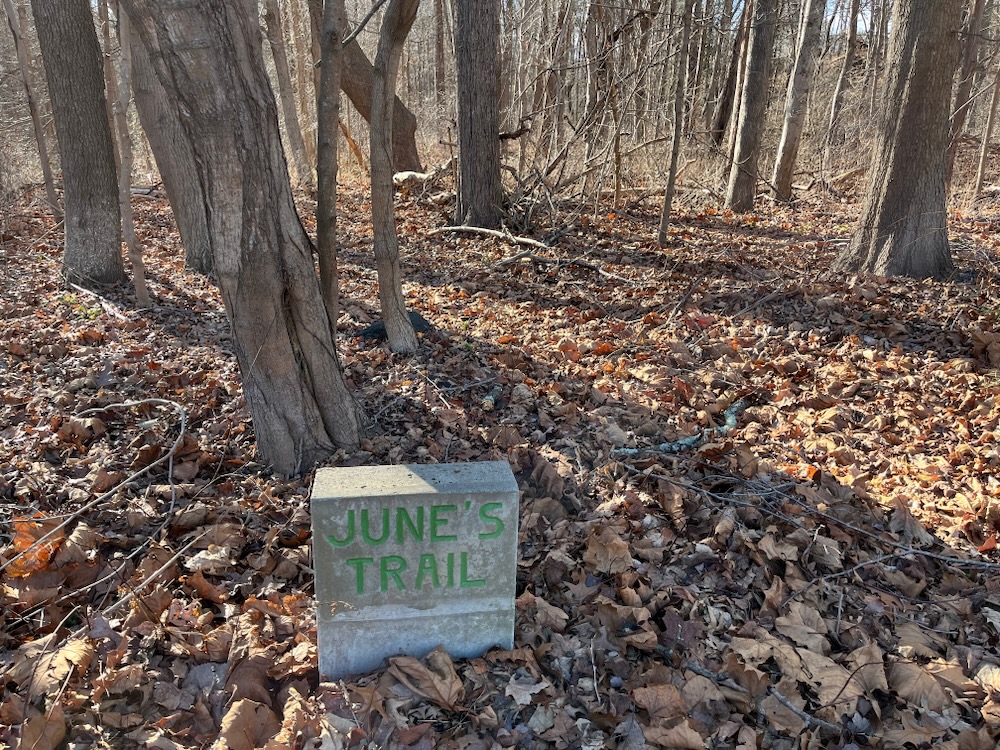
It is named in June Cooke’s honor. And June Cooke was one of those wonderful humans that made Connecticut a better place. Heck, she wrote the original brochure about Dividend Pond that described all the history of the industries that once existed here, from the mill that made crackers and hard bread for sea-going vessels to factories that made single-shot muzzle-loading pistols, miniature toys, cast iron banks, chandeliers, chisels, plantation hoes and other edged tools and those “never slip” horseshoes I mentioned earlier.
June passed away in 2015 and her out-and-back trail takes visitors past more mill sites and along the banks of the brook. I hope this link to her story still works when you click on it. There’s way too much to include here, but I wanted to let you know that Ms. Cooke was interested in archaeology since she was a little girl. She spent her life with various archaeological societies and organizations, both exploring and preserving sites. She helped establish legislation to preserve and protect important areas around Connecticut.
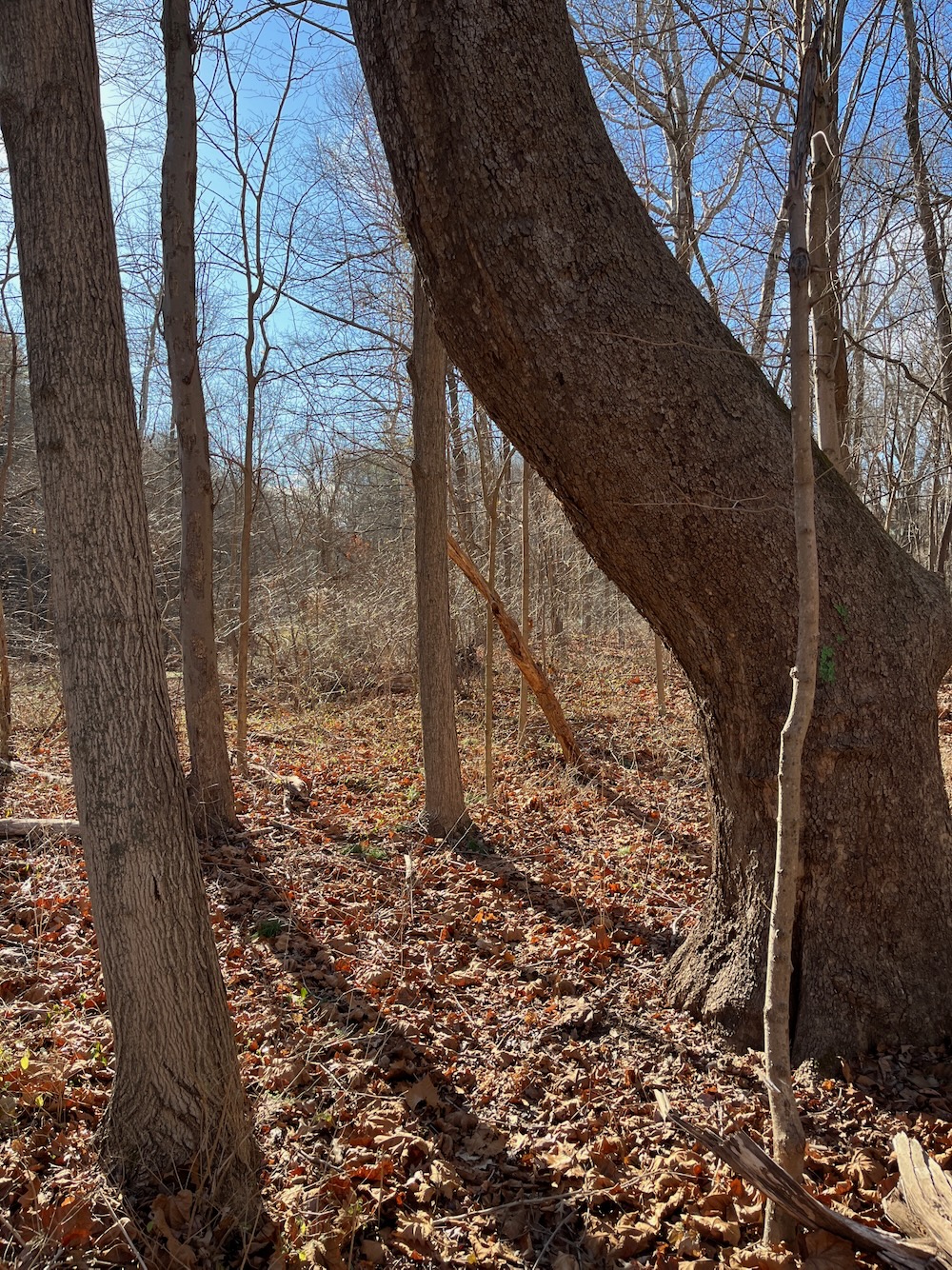
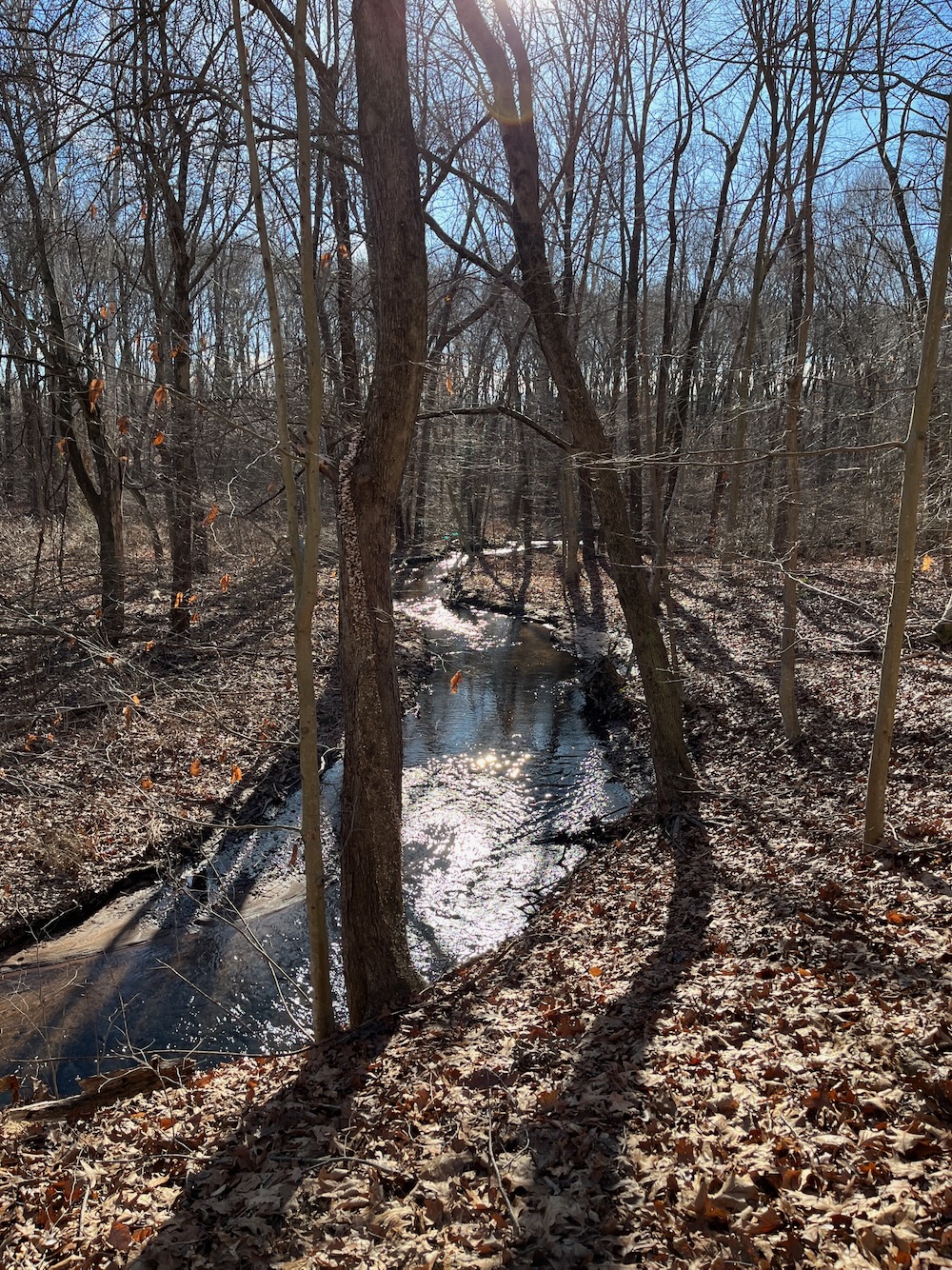
She was not only devoted to the science of archaeology, but June generously gave of her time and expertise in so many ways, to so many causes. She volunteered for the Friends of Dinosaur State Park, helped raise game birds and rehabilitate wildlife, created natural and cultural trails through Quarry Park and Dividend Pond. She helped guide through the State Archaeological Preserve nomination for the Dividend Brook Industrial Archaeological District, protecting stone ruins of the water-powered mill complexes there.
June’s interests spanned the arts and crafts. She was an active member in both the Rocky Hill and South Windsor Historical Societies, and volunteered at the Wood Memorial Library in South Windsor. Suffice it to say, without people like June, CTMQ wouldn’t be the same.
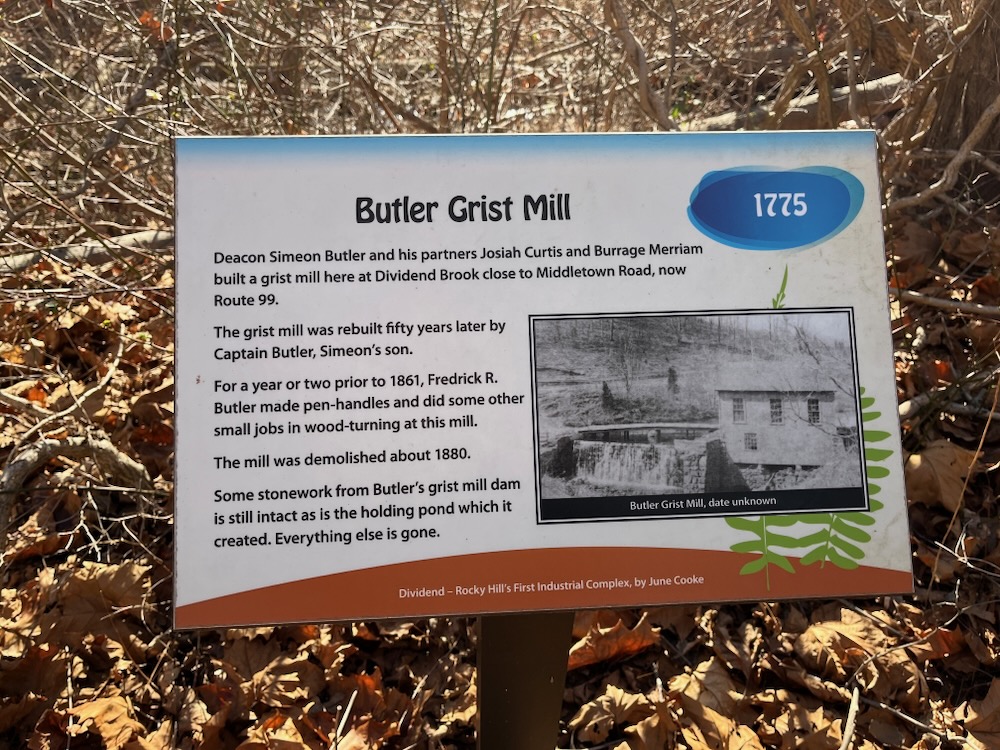
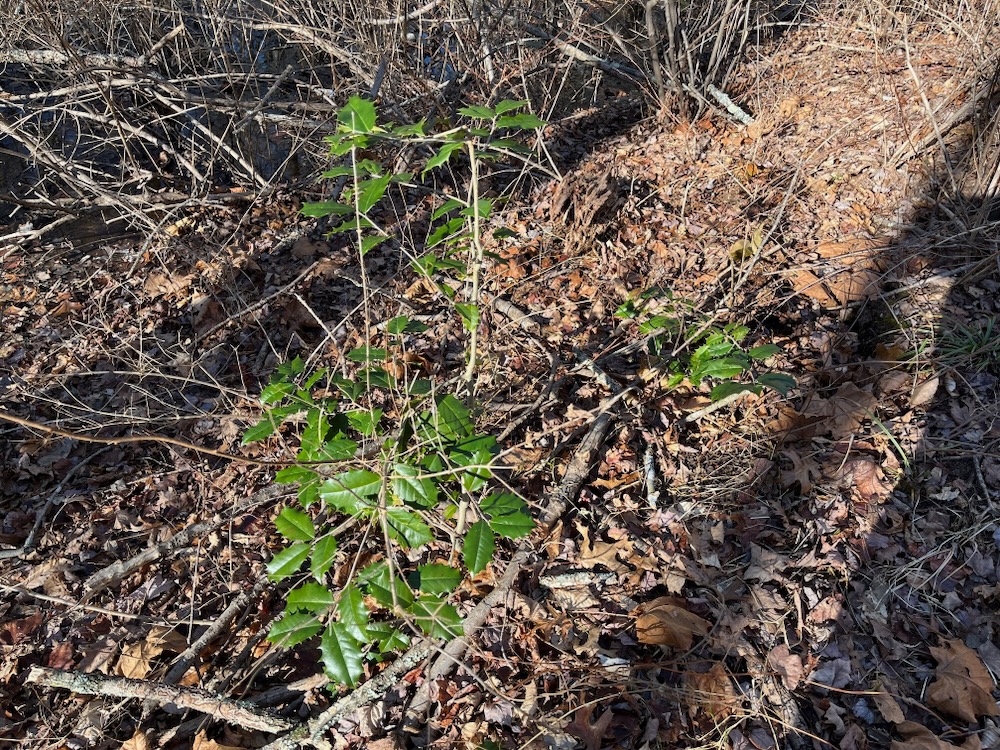
Random holly bush
Her trail, however, could use some help. At least it did when I hiked it. I guess in one sense, it’s a bit of an adventure and June would have liked that. It is blazed fairly well, but was being overtaken by lots of multiflora rose and other junky invasives. Some of the stream crossings were washed out, but it did take me to some rarely visited ruins of industry, which was June’s whole “thing.”
There are a couple of explanatory signs along the way, noting the Butler Grist and Butler Saw Mills that used to exist here.
I did feel a bit of a spark knowing that very few people venture out to the end of this trail, not just because it was a bit of a mess, but because it doesn’t go anywhere. I thought I’d be able to bushwhack over to the yellow trail, saving me nearly a mile of backtracking, but no. There was a felled tree across Dividend Brook:
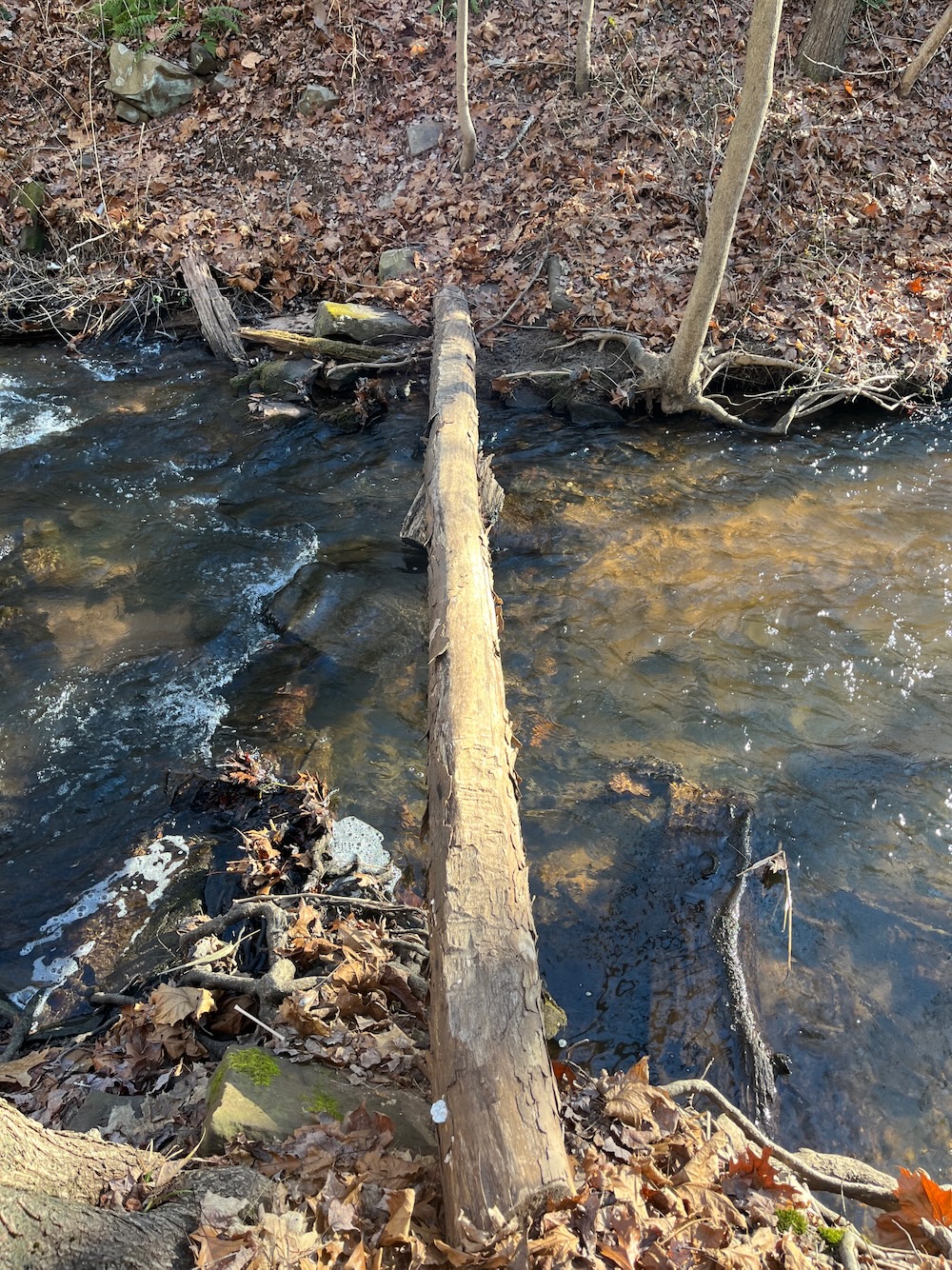
… and I really thought about it. Like, for a good minute. But I’m over 50 now and it was December and it was cold and I was a couple miles away from my car and I had stuff to do and I decided it wasn’t worth the risk.
So I returned back to Pleasant Valley Road and did the “I’m over 50 now and it was December and it was cold and I was a couple miles away from my car” crossing across a proper bridge…
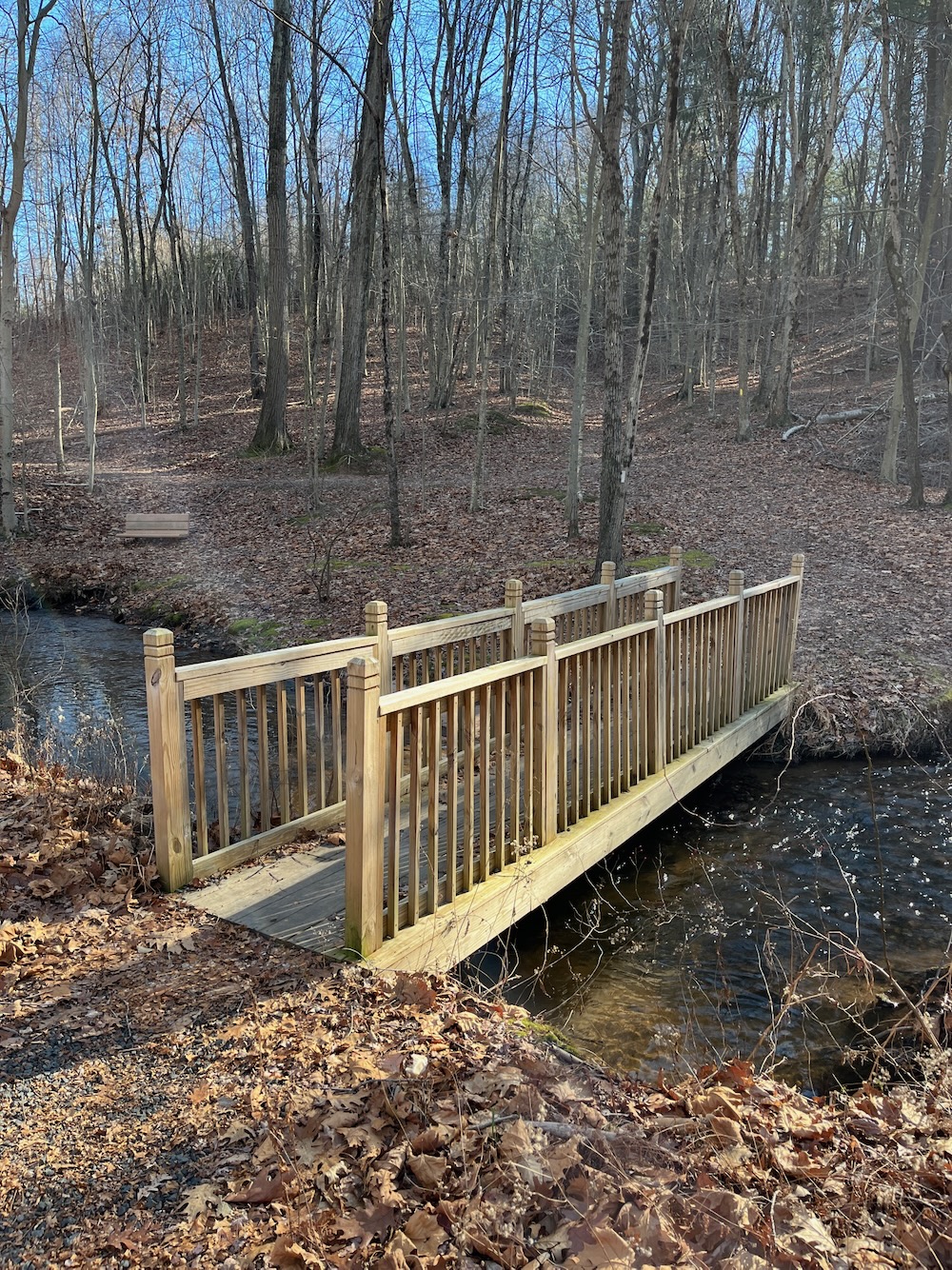
… and I was happy about that. Now across that handsome proper bridge, I hopped onto the yellow trail which has an entirely different feel than the rest of Dividend Pond. Up onto some eskers and into a pretty white pine forest. The trail passes old bean fields — now the parking area for the Travelers Championship.
In recent years, a mountain biking crew has built a bunch of serpentine trails around these woods which look like fun. As for me, I wasn’t interested in the fancy TPC River Highlands golf course over yonder or the fancy singletrack hither and yon, I was all about cresting the hill and peering down into the sand pit from a promontory high above.
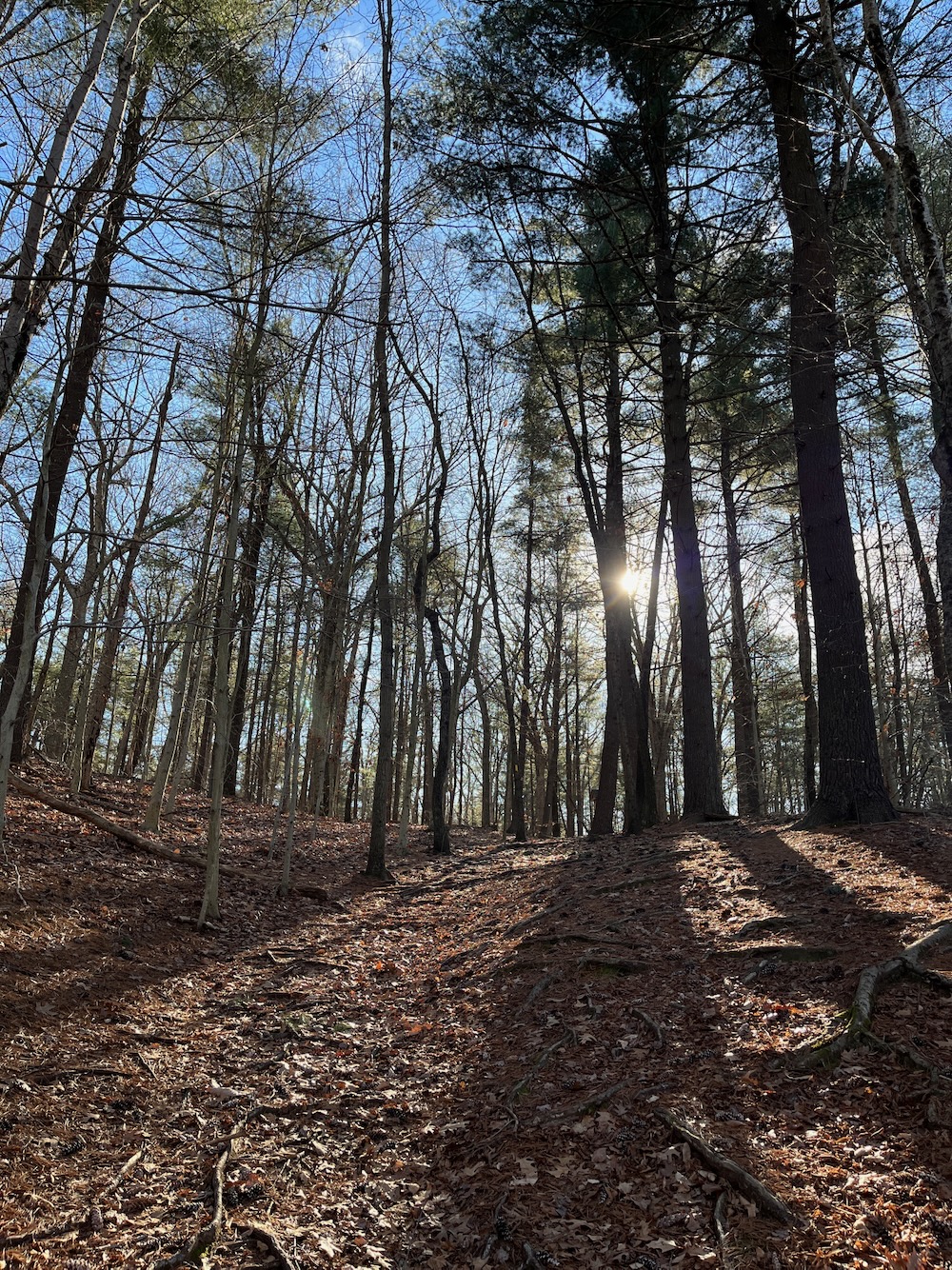
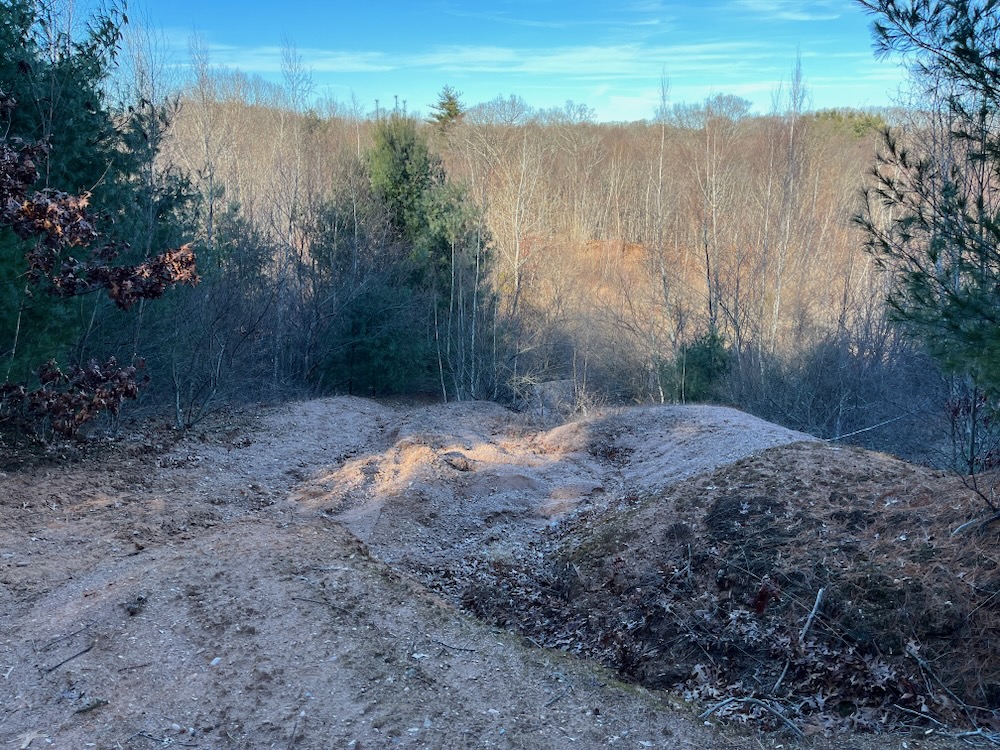
Oh, this isn’t any ol’ sand pit mind you.
This, my friends, is the Glacial Lake Hitchcock Sediment Dam. Twenty thousand years ago, during the last Ice Age a massive glacier covered Connecticut all the way down to Long Island. As the ice slowly melted back about 18,000 years ago, the water cascading off its edge filled the Connecticut Valley, creating a vast lake. I was standing on its southern edge, where the glacier pushed stone and sand into a vast wall.
It just felt… different. Entirely different from the rocky tumbles of the waterfall at the outset of my hike, Different from the marshlands beside the June Cooke Trail and its New England hardwood forest. Different from the white pine forest just behind me. And of course, very different from the PGA-level golf course to my right.
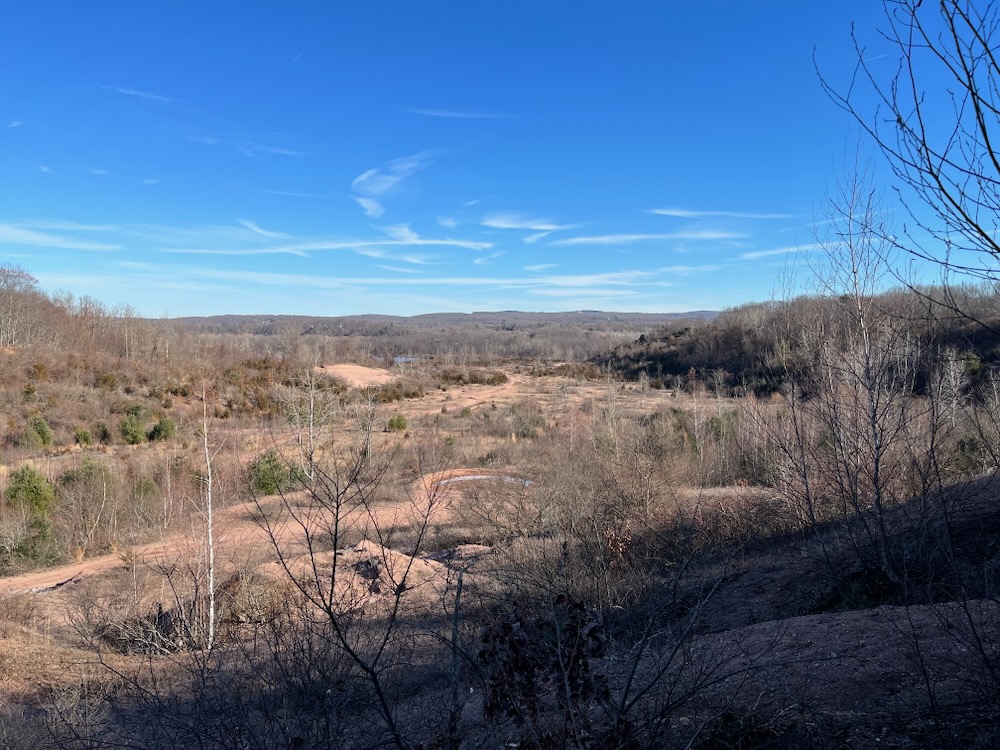
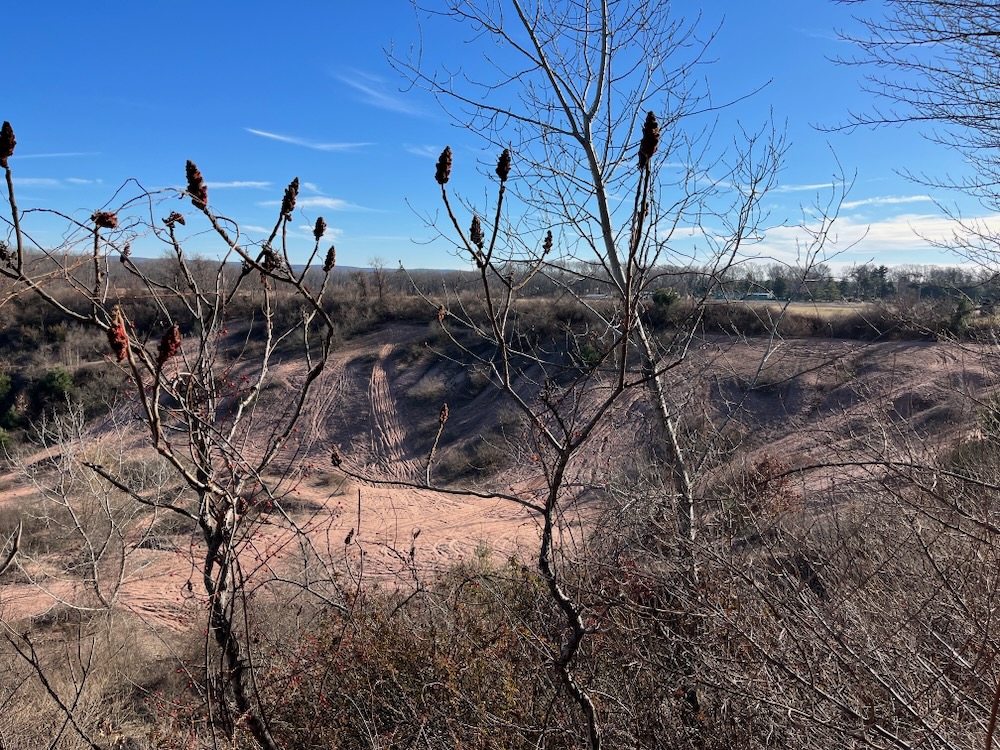
The area has been mined for sand for decades, and the evidence of that is obvious. The evidence of the Ice Age Lake isn’t as obvious, but its there. And it’s cool.
I descended back down and rejoined the White Trail that circles the Upper Pond. I followed it back towards the falls and the Lower Pond along a decidedly different path than exists on the other side of the water. Here, it was shaded and clattered with roots and rocks before passing the falls again and then looping around the Lower Pond. It’s here that the true nature of the State Archaeological Preserve is obvious.
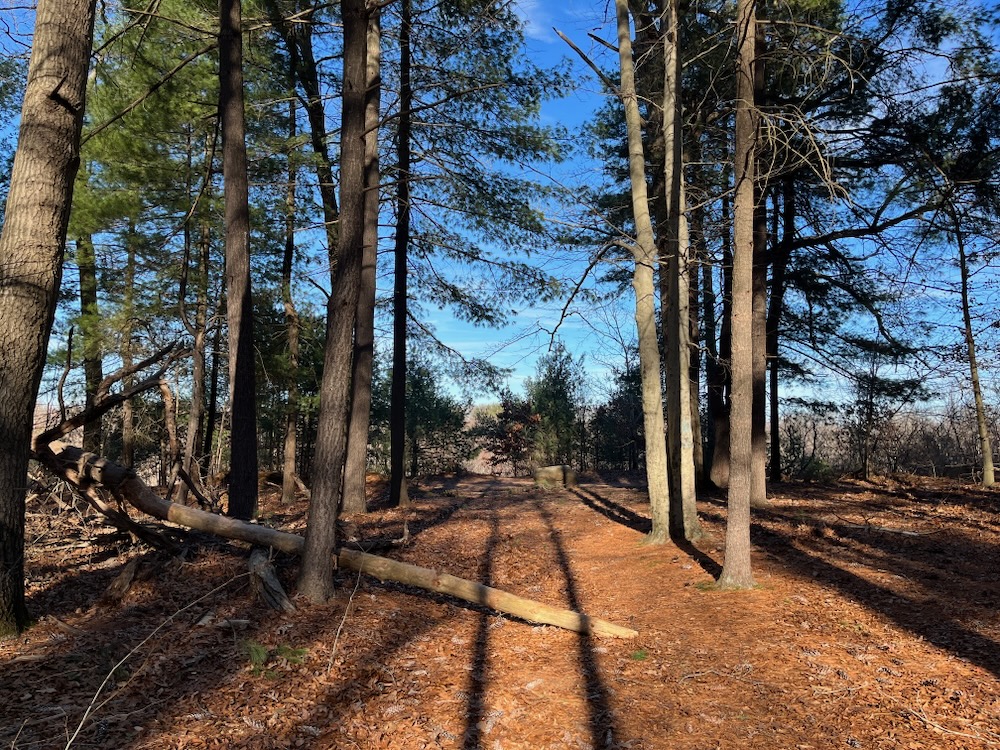
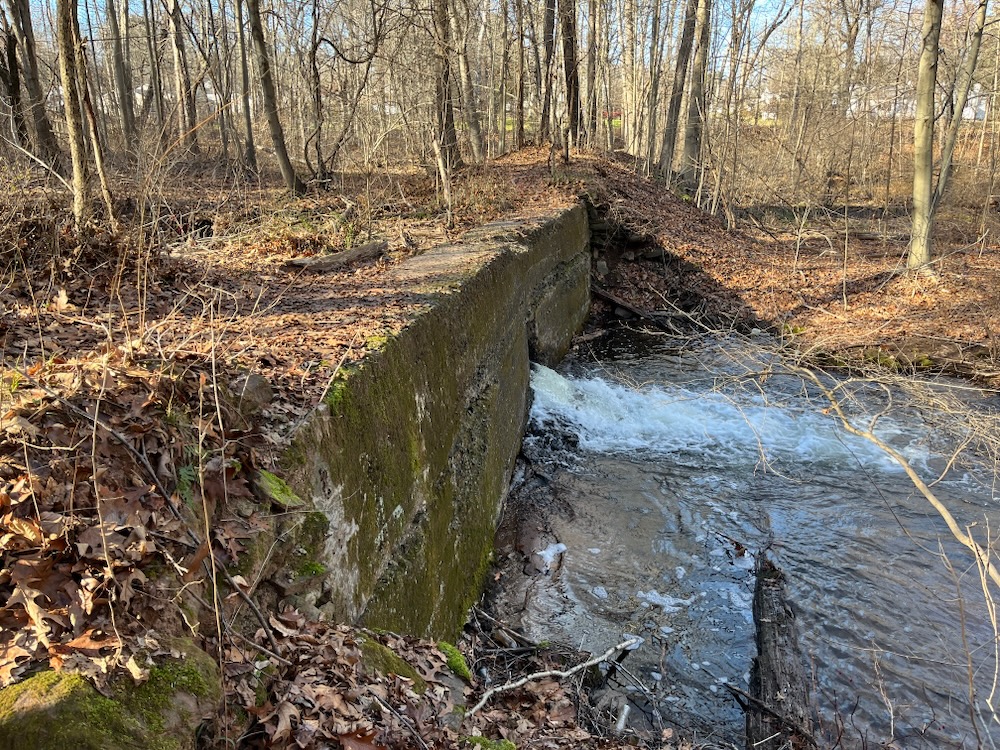
Several signs pop up along the trail, explaining the ruins that are scattered on both sides of the brook and Lower Pond. The sluiceway and horseshoe drop forge, Bulkeley Corne Mill (1677), Bulkeley Dam, Butler & Sugden Shear Factory (1854), Steven’s Toy Factory (1865), and more. There are at least a dozen sites here; mills and foundries dating from the late 17th-century into the early 1900’s.
The former homestead (and presumed factory owners) Edward Bulkeley remains as well. It’s fun to poke around and learn about the area while hiking the rather pretty around the Lower Pond. And all this is a result of June Cooke’s preservation and investigative efforts.
I titled this page “A Trail Divided” and now you know why. So much diversity within a relatively small area, squeezed in between the state’s most famous golf course, a residential neighborhood, an industrial park and the Connecticut River. Well done June Cooke and Rocky Hill, well done.
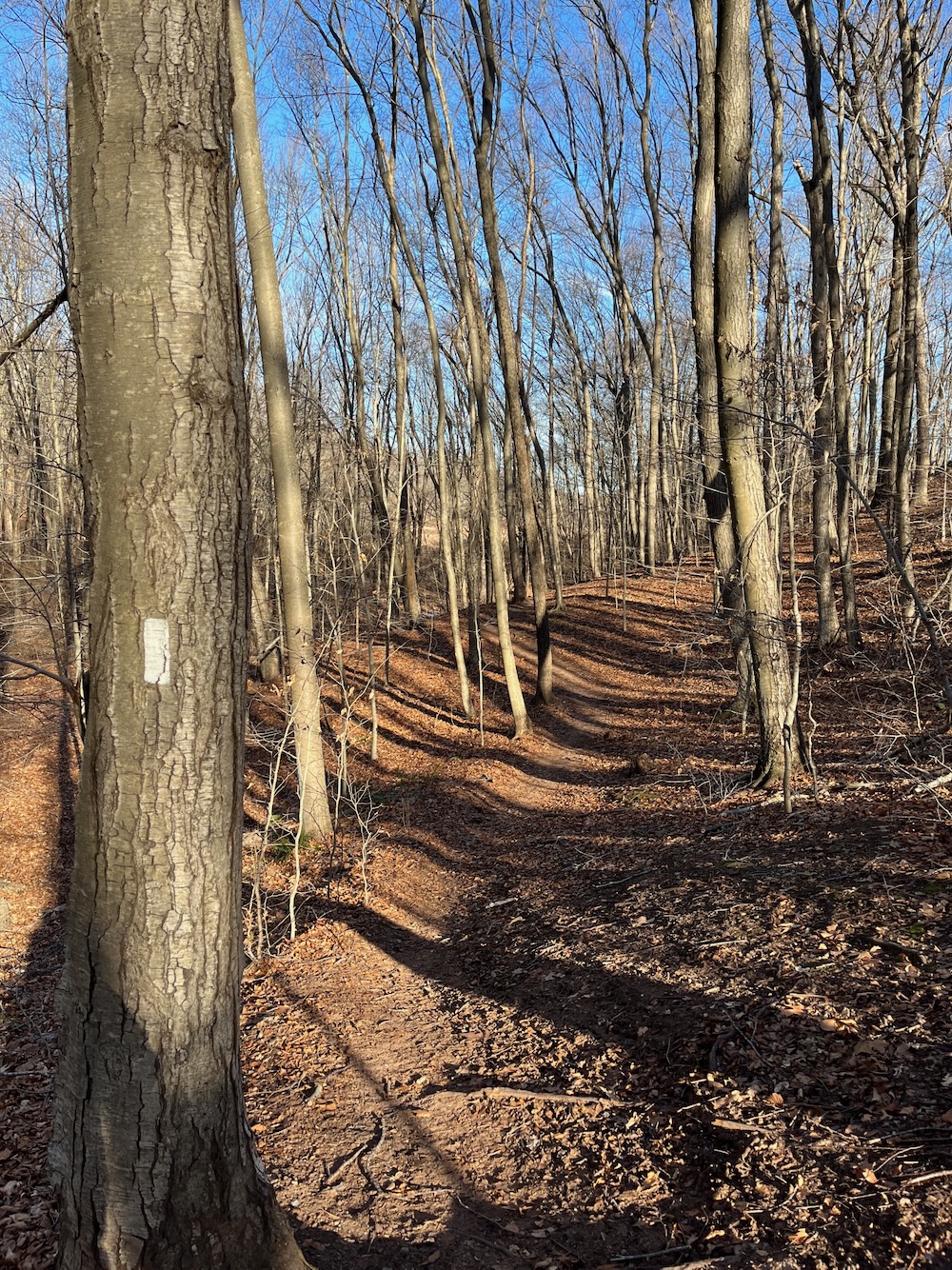
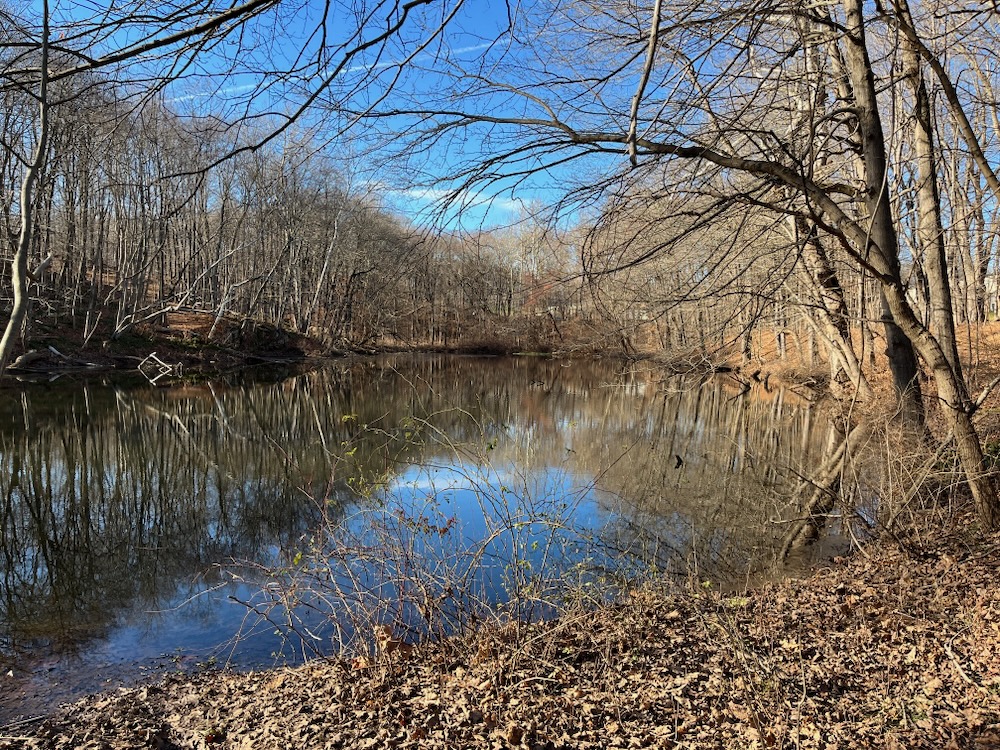
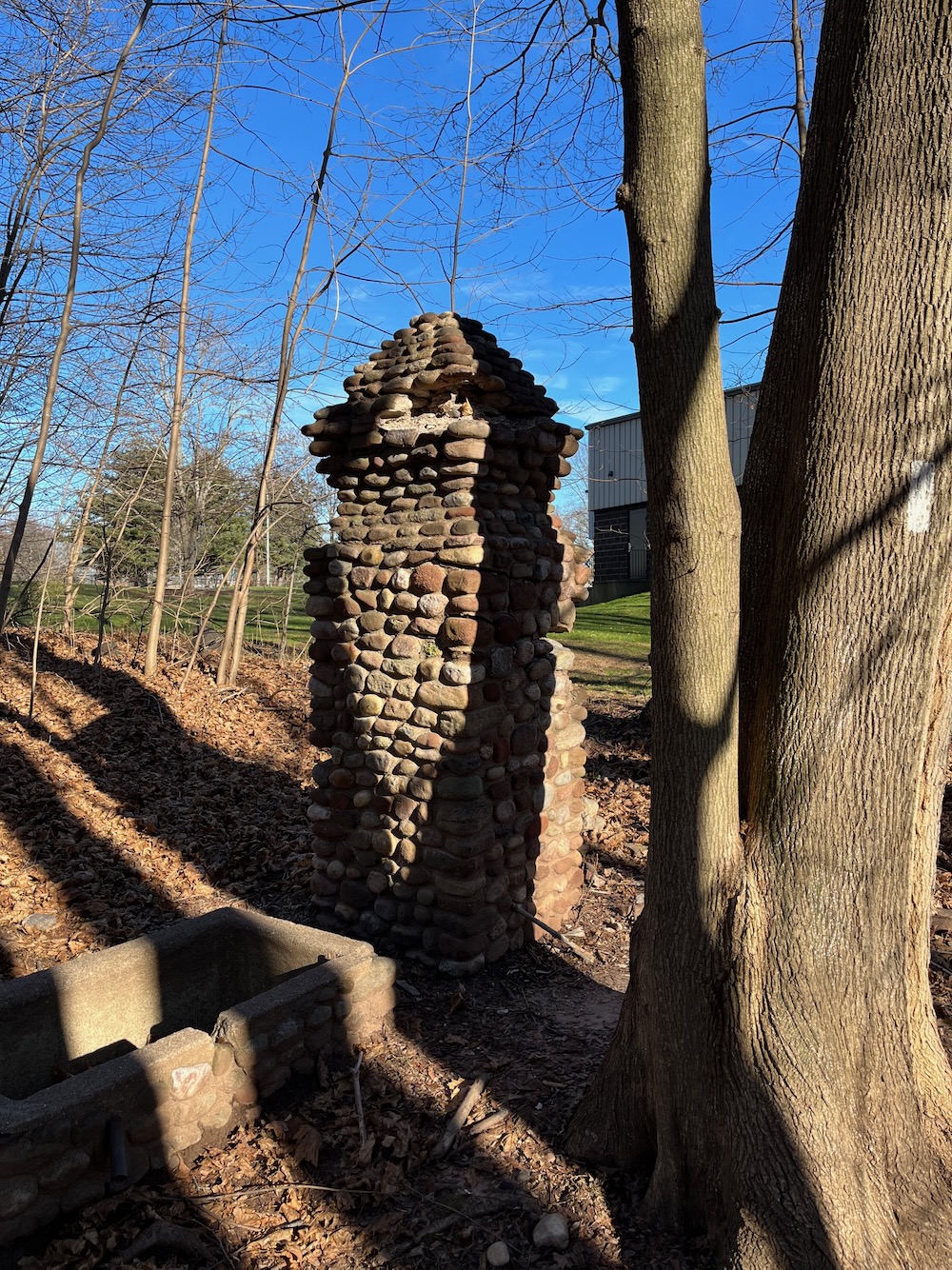
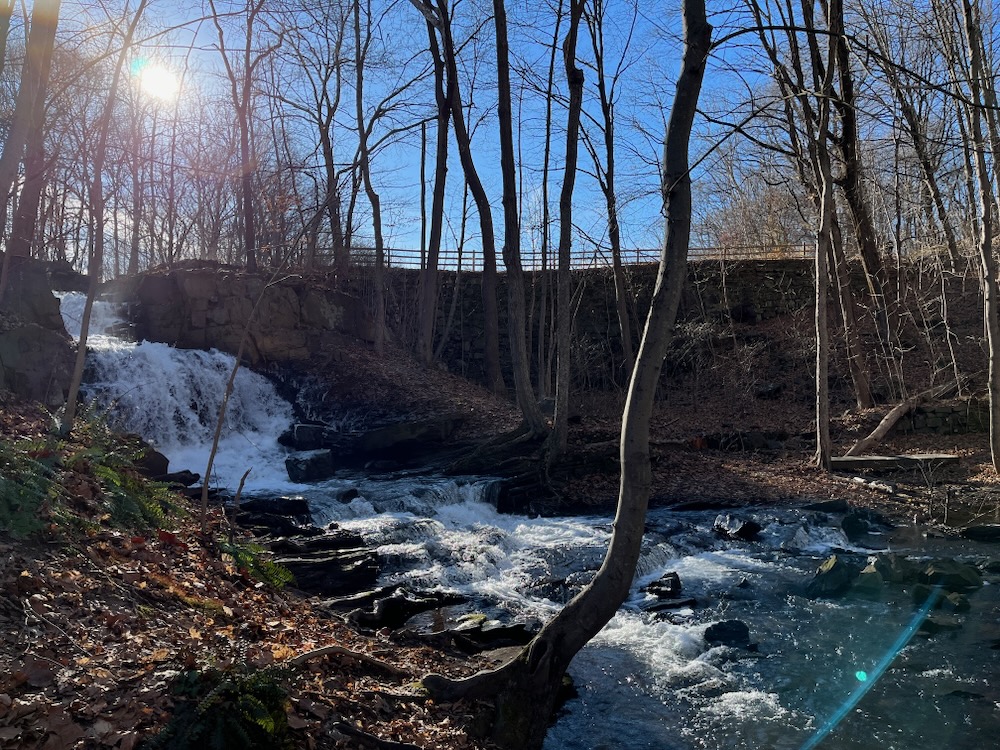
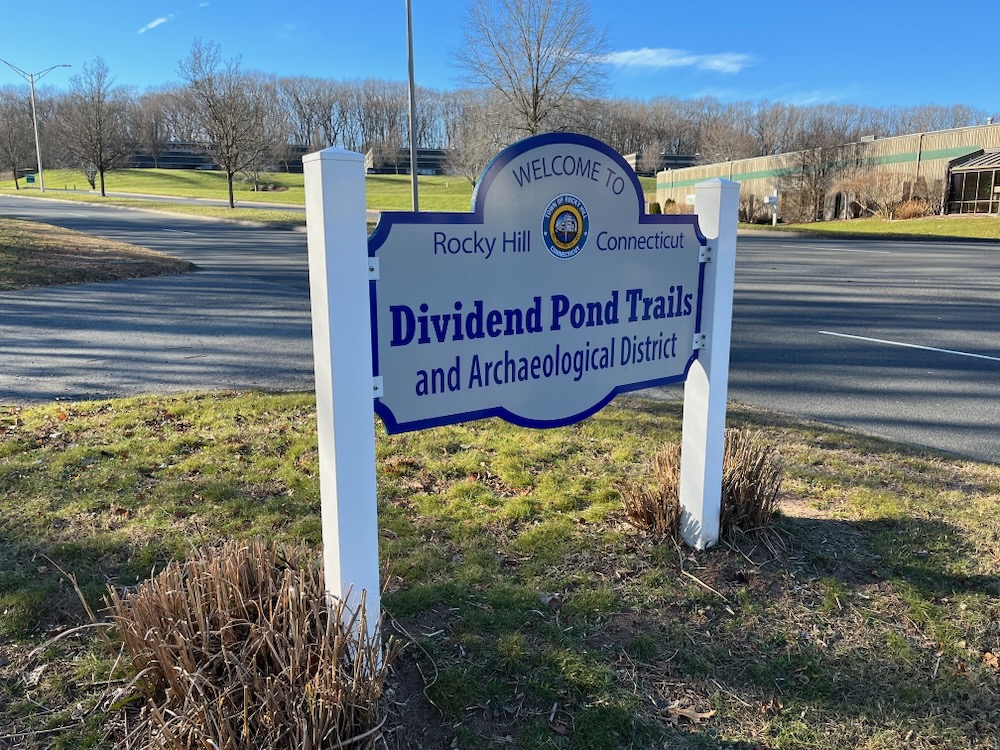
![]()
Glacial Lake Hitchcock Sediment Dam
Dividend Pond Waterfall
CTMQ’s Rocky Hill’s Town Trails

Leave a Reply